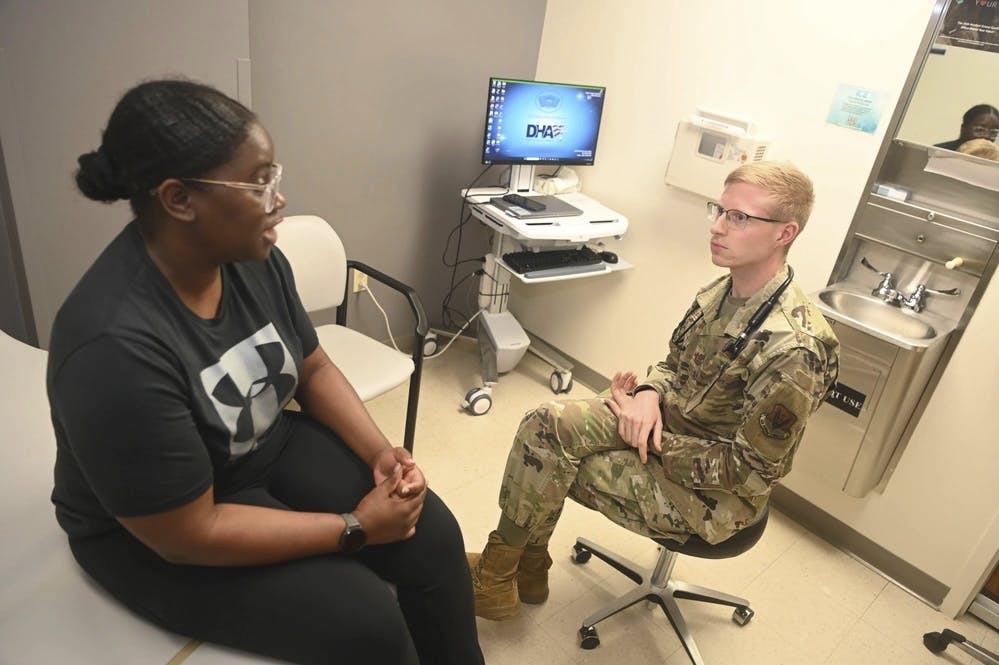CMS Prepares for ‘Unwinding’ of Medicaid Continuous Enrollment Provision
As the public health emergency ends, CMS emphasizes key technologies for post-pandemic operations.

The Centers for Medicare and Medicaid Services (CMS) is preparing for a major shift in services and is using tools like telehealth and health insurance marketplace to support the transition.
More than 100 million people rely on CMS for health care coverage, and since the pandemic that number has grown expeditiously. During the peak of the pandemic, Congress launched the Families First Coronavirus Response Act (FCCRA), which established a protocol that required Medicaid programs to keep people continuously enrolled until the COVID-19 public health emergency (PHE) ends.
Now that the emergency declaration is set to end at the end of the month, the FCCRA will follow suit, meaning more than 90 million people who were receiving coverage under the continuous enrollment provision may lose it.
For CMS this process is known as “unwinding,” which will involve a transition back to the original Medicaid eligibility operations.
“As of November 2022, over 91 million people were enrolled in Medicaid and the Children’s Health Insurance Program (CHIP). State Medicaid agencies will redetermine eligibility for Medicaid or CHIP for all of these people between now and May 31, 2024,” a CMS spokesperson said.
As the Medicare eligibility comes to an end for some, CMS is implementing a multi-pronged public outreach strategy to inform patients of the health care changes.
“This includes national and local public engagement, paid advertising, media engagement, communications toolkits and materials, and direct-to-consumer communications,” CMS spokesperson said.
During the massive shift, CMS will rely heavily on technology to ensure a smooth transition.
As they work to make sure health care remains available, CMS has revamped its Champions for Coverage program, which includes an online health insurance marketplace for uninsured Americans. Following the upgrade, the program has quadrupled the number of navigators who are on standby to help patients enroll online.
CMS allocated a total of $100 million to federal “Marketplace Navigator” grantee organizations for the 2022-2023 budget period, including $12.5 million in support of additional direct outreach, education and enrollment activities for unwinding
“Navigators and other assistance personnel will maintain a critical physical and virtual presence in communities across the U.S. to help consumers understand basic concepts and rights related to health coverage, provide enrollment assistance and work with individuals to link coverage to care,” the CMS spokesperson said.
Now, as CMS continues to dedicate resources to technology, the agency plans to keep its user experience high while undertaking a shift in accessibility.
“CMS is committed to using every tool at our disposal, including the latest technological advances, to improve the health care experience, solve the health care issues impacting people’s lives, and drive toward an equitable and person-centered health care system,” the spokesperson said.
CMS’ recent efforts are backing cross-government priorities to improve the digital experience for citizens — a 2021 presidential executive order. This includes ensuring patients living in undeserved and rural communities still receive access to care. This is where telehealth comes into play.
“During the COVID-19 public health emergency, individuals with Medicare had broad access to telehealth services, including in their homes, without the geographic or location limits that usually apply as a result of waivers issued by the secretary, facilitated by the Coronavirus Preparedness and Response Supplemental Appropriations Act 2020 and the Coronavirus Aid, Relief, and Economic Security Act,” the CMS spokesperson said.
According to HHS officials, the telehealth services provide fast and cost-effective communication between patients and providers. But that access could be disrupted during the unwinding process. According to CMS, the telehealth coverage will vary by state.
“For Medicaid and CHIP, telehealth flexibilities are not tied to the end of the public health emergency and have been offered by many state Medicaid programs long before the pandemic. CMS encourages states to continue to cover Medicaid and CHIP services when they are delivered via telehealth,” the spokesperson said.
In hopes to expand telehealth coverage nationwide, CMS has released the State Medicaid & CHIP Telehealth Toolkit, which provides states with assistance to adopt widespread telehealth services.
This is a carousel with manually rotating slides. Use Next and Previous buttons to navigate or jump to a slide with the slide dots
-

VA's Platform One Powers Rapid Innovation to Bolster Digital Services
VA's Platform One accelerates software development timelines from weeks to hours, ultimately enhancing digital services for veterans.
5m read -

VA CIO Targets Modern IT and Smarter Workforce Alignment
Agency leaders told lawmakers they are focused on trimming legacy systems and restructuring its workforce to streamline operations.
3m read -

Trump Executive Order Boosts HBCUs Role in Building Federal Tech Workforce
The executive order empowers HBCUs to develop tech talent pipelines and expand access to federal workforce opportunities.
3m read -

IHS Prepares to Deploy PATH EHR at Pilot Sites in 2026
IHS targets PATH EHR pilot in 2026, emphasizing governance, collaboration and interoperability as key pillars of the modernization strategy.
4m read -

FEHRM CTO Targets Two-Year Cloud Migration for Federal EHR
Lance Scott touts new EHR tech advancements, including cloud migration, expanded data exchange and AI integration to improve care delivery.
4m read -

VHA’s AI Chief Led NIH’s New AI RFI
The agency's AI chief Gil Alterovitz helped develop a plan that hints at how NIH is charting the future of AI and biomedical research.
5m read -

Trump Taps Maj. Gen. John Bartrum to Lead VHA
Nominated for VA's top health role, Bartrum brings over four decades of military and public service to the agency.
3m read -

AI Growing in Focus Amid HHS Restructure
Department of Health and Human Services officials see promise in artificial intelligence amid efficiency goals.
4m read -

Federal EHR Leaders Eye Ambient Dictation, Interoperability
Officials from DOD and VA said they are exploring new EHR features such as functionality in offline status and interoperability.
5m read -

Federal Agencies Tout Tech in President Trump’s First 100 Days
Defense modernization and health care restructuring landed among some of the key IT highlights within the president's first few months.
6m read -

VA Secretary Tells Congress Tech Efficiencies Will Help Offset Workforce Reductions
Technology improvements will help allow department to maintain veteran care, VA leadership tells Senate Veterans Affairs Committee.
-

NCI Uses Wearables Data to Link Exercise to Cancer Risk
NCI finds a connection between low-intensity exercise and decreased risk of cancer through data collected from wearable technology.
9m listen
















